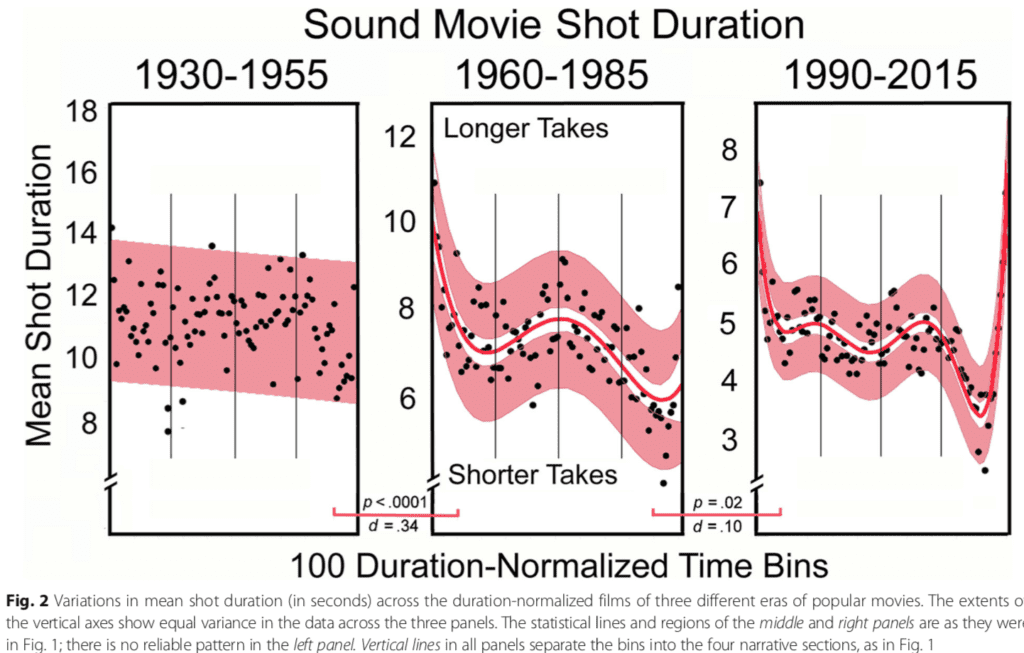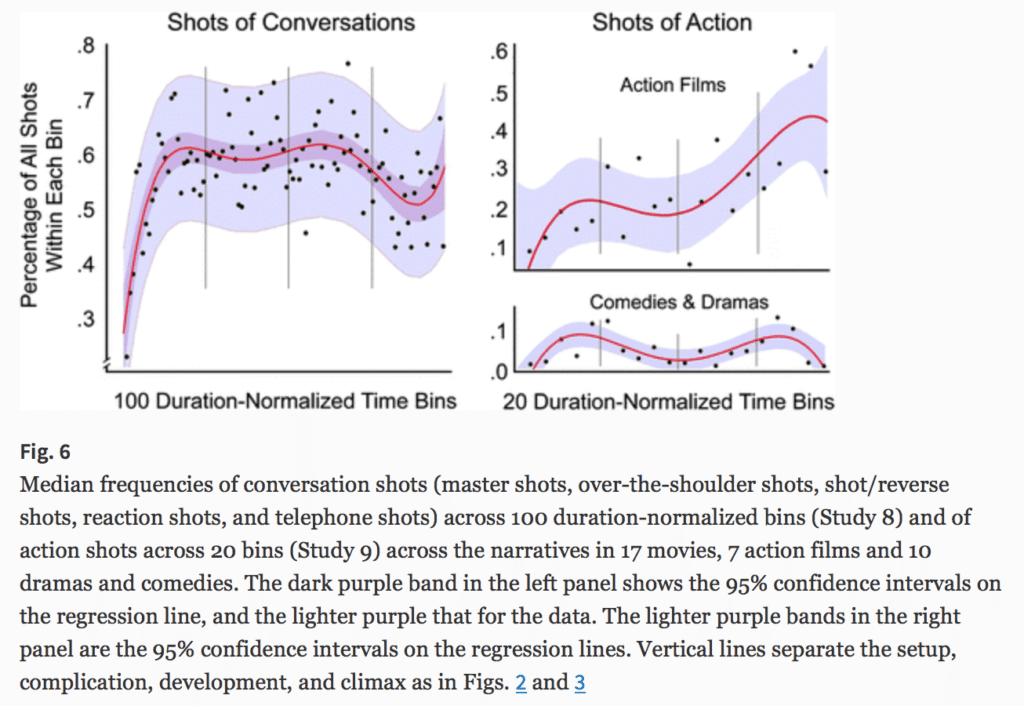James Cutting writes:
Movies have changed dramatically over the last 100 years. Several of these changes in popular English-language filmmaking practice are reflected in patterns of film style as distributed over the length of movies. In particular, arrangements of shot durations, motion, and luminance have altered and come to reflect aspects of the narrative form. Narrative form, on the other hand, appears to have been relatively unchanged over that time and is often characterized as having four more or less equal duration parts, sometimes called acts – setup, complication, development, and climax. The altered patterns in film style found here affect a movie’s pace: increasing shot durations and decreasing motion in the setup, darkening across the complication and development followed by brightening across the climax, decreasing shot durations and increasing motion during the first part of the climax followed by increasing shot durations and decreasing motion at the end of the climax. . . .

I’m fascinated by the topic, and I love the idea of people studying storytelling in a systematic way.
People might also be interested in this other paper by Cutting, Narrative theory and the dynamics of popular movies:
Using a corpus analysis I explore a physical narratology of popular movies—narrational structure and how it impacts us—to promote a theory of popular movie form. I show that movies can be divided into 4 acts—setup, complication, development, and climax—with two optional subunits of prolog and epilog, and a few turning points and plot points. . . . In general, movie narratives have roughly the same structure as narratives in any other domain—plays, novels, manga, folktales, even oral histories—but with particular runtime constraints, cadences, and constructions that are unique to the medium.
Here’s one of the patterns he found:

P.S. Excellent surname for someone who studies the construction of films.